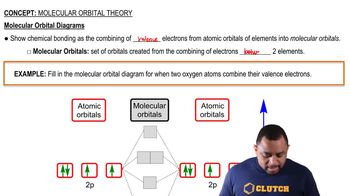Here are the essential concepts you must grasp in order to answer the question correctly.
Electron Configuration
Electron configuration describes the distribution of electrons in an atom's orbitals. For a phosphorus (P) atom, which has 15 electrons, the electron configuration is 1s² 2s² 2p⁶ 3s² 3p³. Understanding this configuration is essential to determine which orbital an electron will be removed from when an atom is ionized.
Recommended video:
Electron Configuration Example
Orbitals and Energy Levels
Orbitals are regions in an atom where there is a high probability of finding electrons. They are organized into energy levels, with s, p, d, and f types having different shapes and capacities. In phosphorus, the outermost electrons are in the 3s and 3p orbitals, which are higher in energy compared to the filled inner orbitals.
Recommended video:
Molecular Orbital Diagram
Ionization Energy
Ionization energy is the energy required to remove an electron from an atom in its gaseous state. The first ionization energy for phosphorus is relatively low compared to noble gases, indicating that the outermost electrons (in the 3s and 3p orbitals) are more easily removed. This concept helps predict which orbital an electron will be removed from during ionization.
Recommended video:




